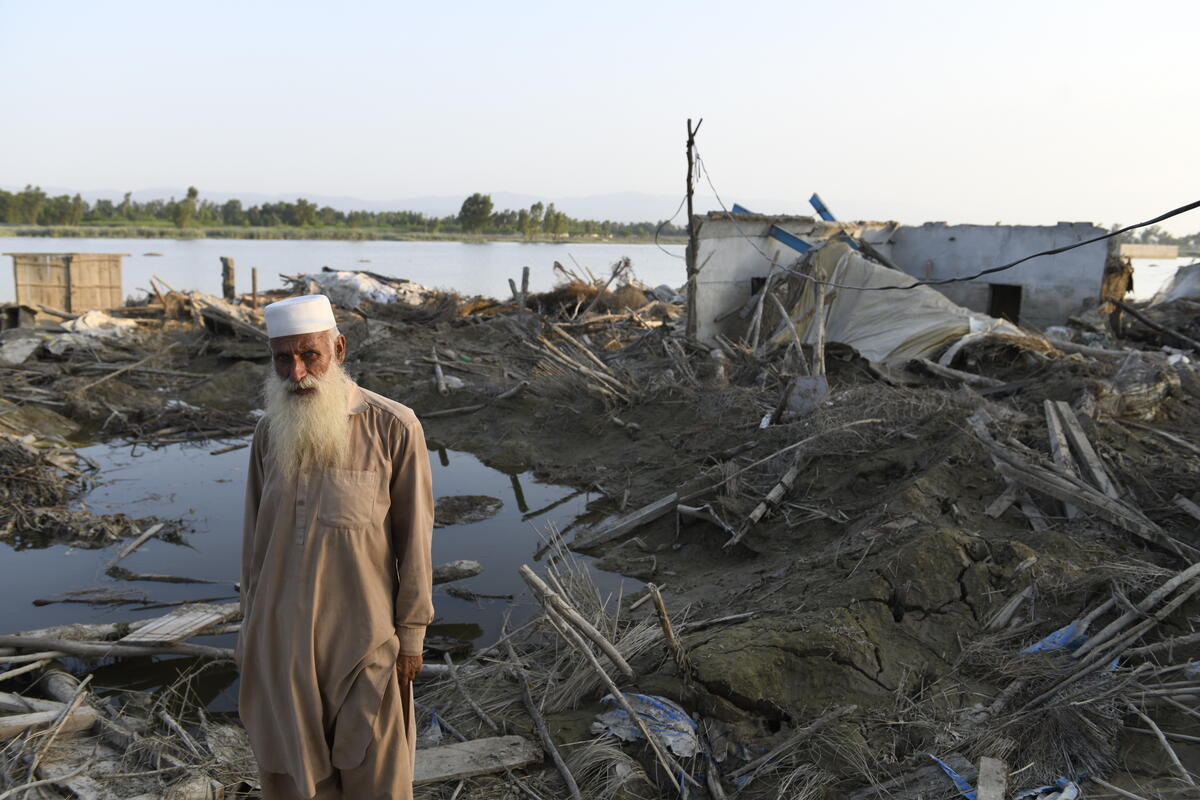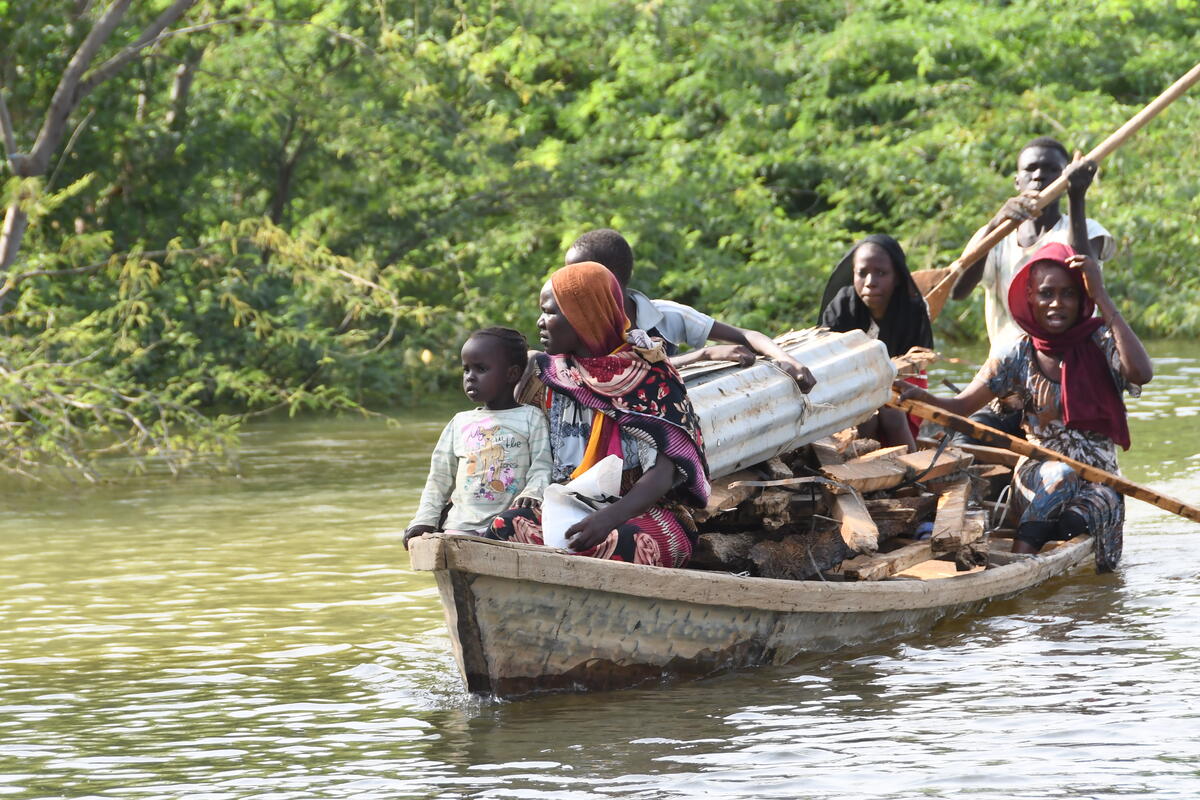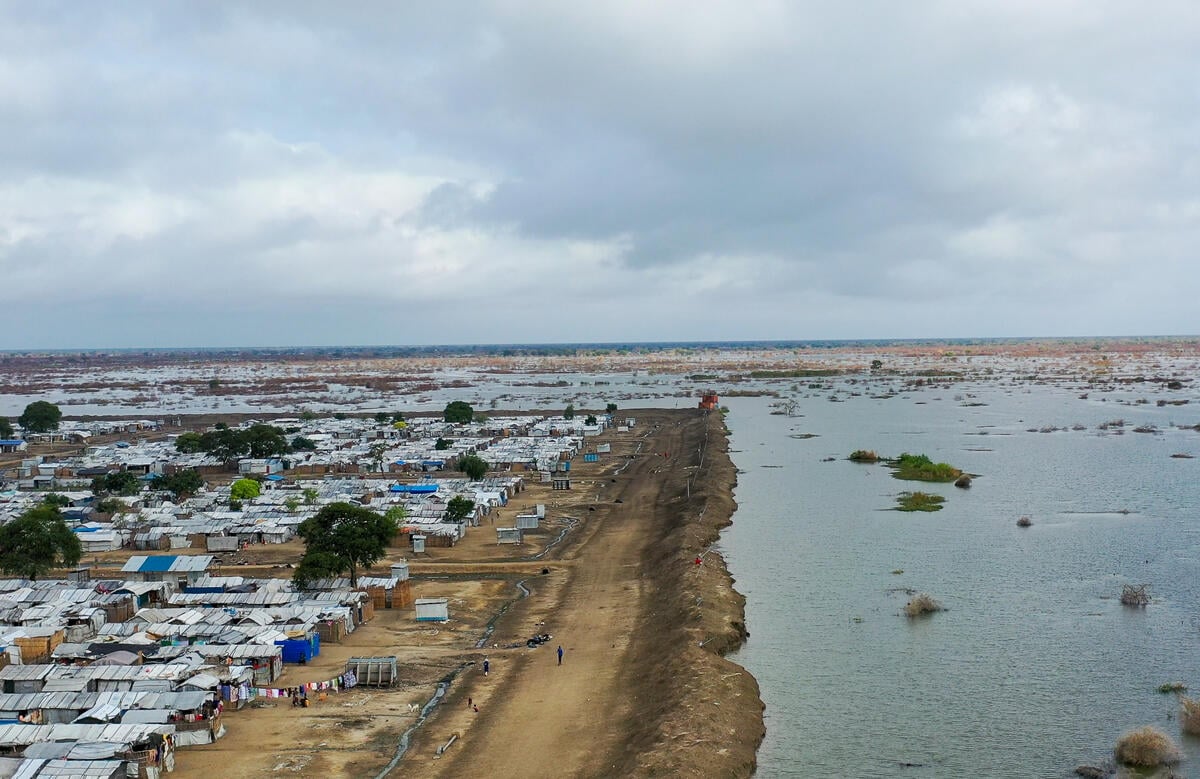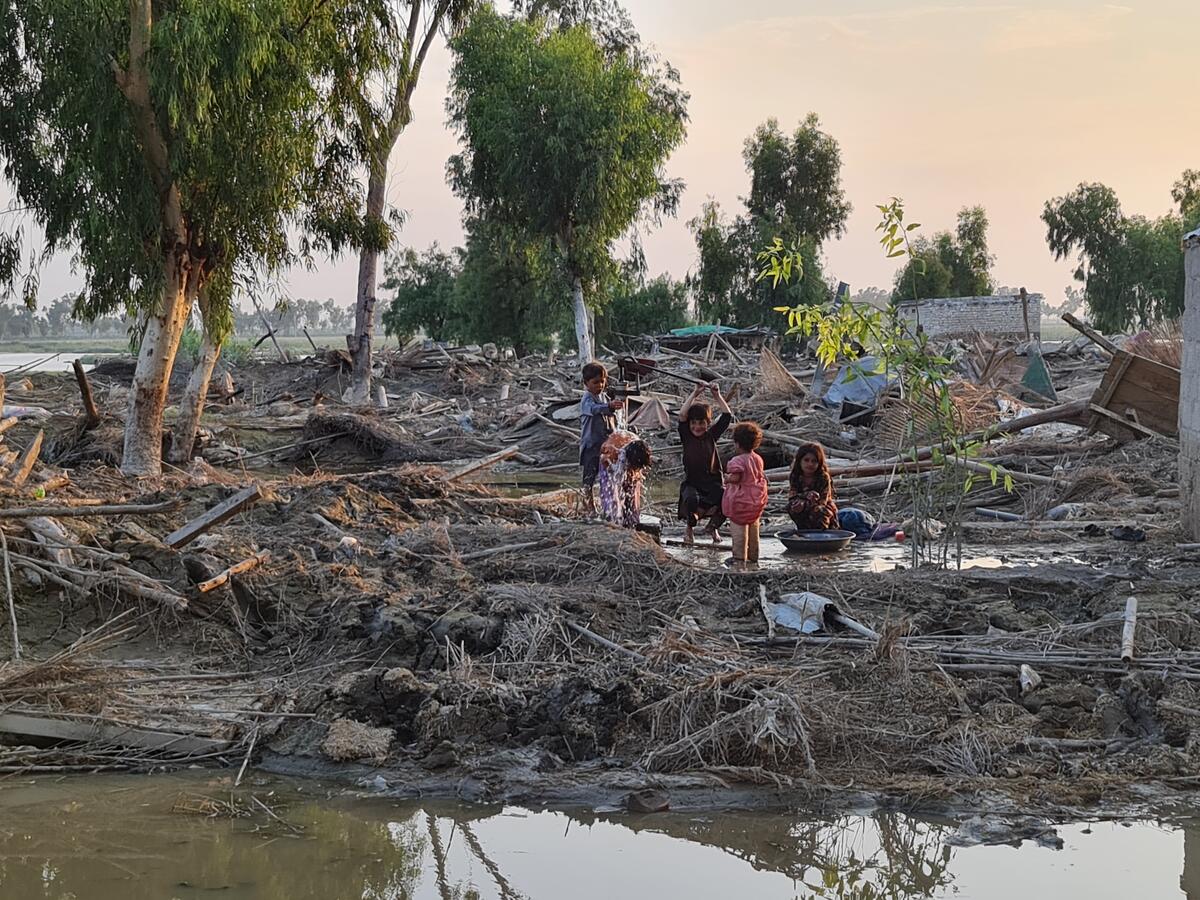UNHCR airlifts supplies to flooded camp in Kenya
UNHCR airlifts supplies to flooded camp in Kenya

DADAAB, Kenya, May 5 (UNHCR) - The UN refugee agency on Sunday began airlifting much-needed supplies for thousands of refugees rendered homeless by massive flooding in Kenya's Dadaab camp after heavy rains wrecked their homes four days ago.
On Sunday, UNHCR-chartered flights began delivering fuel from Garissa, the north-eastern provincial capital, located some 100 km away from Dadaab, a remote camp close to the Kenyan border with Somalia. Ten flights have already delivered 12,000 litres of fuel in an initial delivery that is expected to meet the camp's fuel needs for up to eight days. Diesel fuel is used for vehicles and for generators that provide power to offices, hospitals, clinics, and drive water pumps throughout the camp. Because of low fuel stocks to run water pumps, supplies of potable water have been reduced by nearly half.
UNHCR has purchased an additional 20,000 litres of fuel and is assessing road conditions before sending these to Dadaab from the Kenyan port of Mombasa.
Since last week, Dadaab - a three-camp complex for 130,000 refugees - has been cut off by heavy rains that have washed away parts of the Garissa-Dadaab road, the only road connecting the remote camp from the Kenyan capital, Nairobi. Airlifts are now the only viable means of transport.
In Dagahaley - one of the three Dadaab camps - more than 650 refugee families (or some 3,000 people) are now homeless. The camp is home to some 40,000 refugees - nearly one-third of the entire Dadaab refugee population of 130,000. Refugees said they had lost a large number of livestock in the floods.
By Sunday, field staff who had visited half of Dagahaley camp to assess the damage caused by floodwaters noted that 550 refugee shelters had collapsed. In Ifo camp, some 10 km away, nearly 80 structures had been destroyed. UNHCR is continuing its damage assessment in both Dagahaley and Ifo camps - the two most affected camps, which together host about 80,000 refugees.
Affected families in Dagahaley have been relocated to a community centre and the UNHCR field office. Other refugees are staying with friends or relatives in drier parts of the camp. The UN World Food Programme is providing sacks to be used as sandbags to protect hospitals and clinics around the two camps.
Classes in Ifo and Dagahaley have been disrupted as some schools remain under water, while others are now without latrines, which have collapsed. Five out of 11 schools in Ifo are flooded while latrines in three schools in Dagahaley have collapsed. Schools were scheduled to re-open for the second term on Monday, after the April school holidays.
In Nairobi, the UN refugee agency is working with the Kenyan government to expedite the release from customs of plastic sheeting used by refugees to cover their shelters. More than 18,000 pieces of plastic sheeting are awaiting customs clearance at Mombasa. The plastic sheeting is expected to be airlifted from the port city to Dadaab.
The current flooding has exacerbated an existing shelter problem in Kenya's camps. Recurrent funding shortfalls have prevented UNHCR from replacing worn-out shelter material in the camps. The last general repairs of refugee shelters and distribution of plastic sheeting were carried out six to seven years ago.
Garissa district, where Dadaab refugee camp is located, is considered one of the worst flood-affected areas in north-eastern Kenya. Last week's flooding was caused by the Tana river bursting its banks into the valley where the camps are located.








